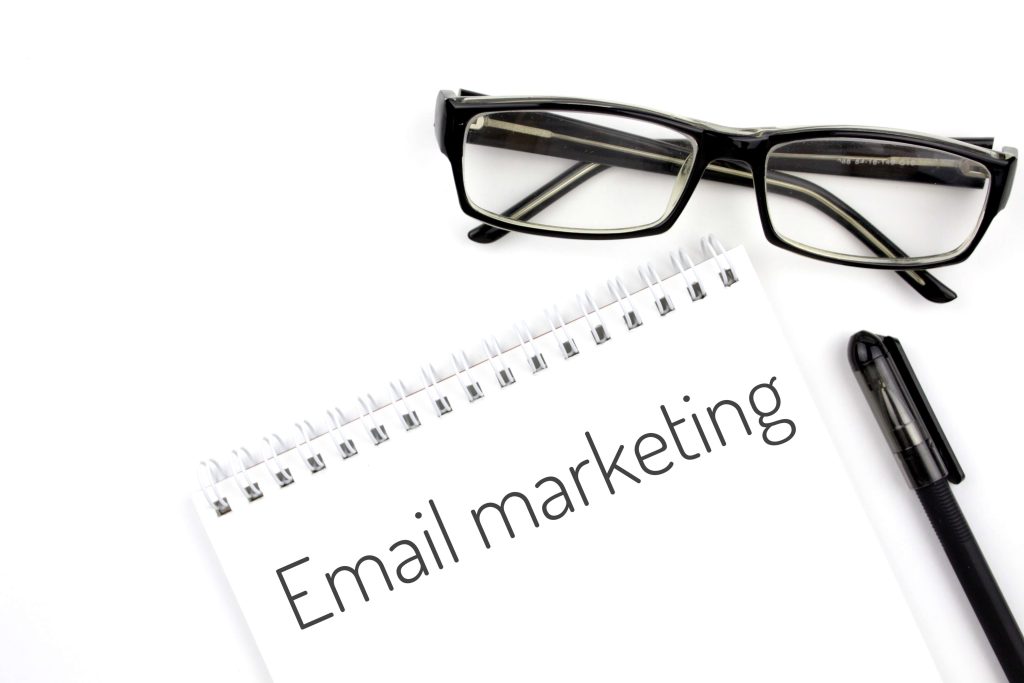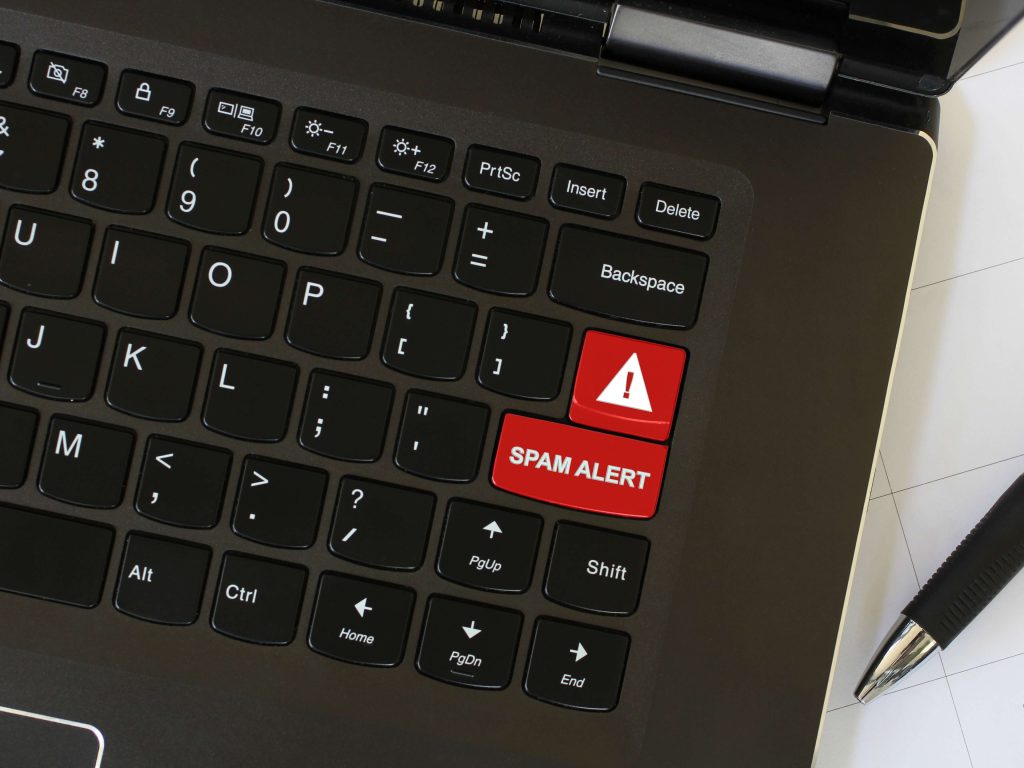
Introduction
Effective Email marketing is one of the ways to remind current consumers of who you are, what you do, and how you contribute value to their lives, even when they aren’t making a purchase. Despite the launch of various marketing channels, email marketing reigns supreme. Many businesses still rely on email as the backbone of their communication strategy. The performance of your email marketing methods can have significant ramifications for the health of your overall organization, whether it’s gathering sales or developing long-term connections with clients.
What are the Key Metrics for an Effective Email Marketing in Business?

If you want to create leads, build your subscriber base, or sell items or services, here are the top email marketing Key Performance Indicators (KPI) to track before sending out your next campaign. Think about and define your ultimate aim for each campaign before sending it out. Each campaign can have a different goal, but in order to assess its performance, you must first identify the campaign’s objectives. So, before you send your next email, take a few moments to consider the following question: “What is the purpose of my email marketing?” Is it to increase the number of subscribers in your database? How can you generate more leads? To increase the number of existing leads who become customers?
To determine the measures you’ll need to track how you’re progressing toward your objective, whatever it is. When used successfully in continuously analyzing your methods and making changes to improve your outcomes, however, email is the most beneficial marketing tool. Marketing metrics allow you to assess the effectiveness of each email and uncover any techniques that may be preventing you from reaching your goals. While each marketing measure has its own narrative to tell, there are a few essential numbers that you should pay attention to in almost every email. For marketers, these are some of the most effective email marketing indicators. To evaluate the success and health of your email marketing initiatives, use the metrics below.
Open Rate
“This is the number of persons that opened your email once—duplicate opens are not counted.”
This is the cleanest type of open rate data, allowing you to see exactly how many individuals opened your email and whether or not they did anything afterward. It gives you an idea of how appealing your subject line is. The subject line of your email tells the reader what to expect from it. They won’t open your email if the subject line isn’t appealing. The email open rate is derived by dividing the number of emails delivered by the number of emails opened by the recipients. Again, in the company, achieving a 100% open email rate is nearly impossible.
The average email open rate on a desktop computer is 22.9 percent, whereas mobile and tablet email open rates are 47 percent. By crafting targeted messaging and delivering customized topic emails that appeal directly to targets, the goal is to enhance this rate as much as possible. You should keep an eye on trends in open rates, just like you should with email deliverability, and change your plans accordingly. To establish a baseline, compare your open rates to what is common in your industry. While open rate is an important KPI, bear in mind that it will not provide you with a complete view of your campaign’s performance on its own. It’s important to track it with other email data like clickthrough rate.
What is the benefit of an email open rate?
If you utilize open rate as a comparative metric, you can get some value out of it. For example, because the factors are fairly controlled, comparing the open rates of this week’s email send versus the previous week’s email send might provide some information. Uninteresting subject lines and email starts are usually the cause of a low open rate. However, email clients may be filtering your material into spam bins before it reaches your intended audience. The more people who open your email, the more likely you are to make a transaction. Personalized content is more likely to succeed in all areas, including open rates. Your open rate will increase the more precisely you can classify your target. While emails delivered to a segmented group have an open rate of more than 28%, non-segmented content has an open rate of just over 18%. Starting experimenting with audience segmentation as soon as feasible will have a significant impact on your sales over time.
Click-through Rate (CTR)
“This is the number of people who opened and clicked on a link in your email.”
Click-through rate (CTR) is one of the most important metrics to track for email campaigns. CTR is a metric that displays how many emails have received one click from a subscriber. It basically shows you if your campaign was appealing enough to entice the target to not just open but also take action. Using consistent tracking to get this proportion gives you clear insight into how many individuals (subscribers) are actively engaged with your email content and curious about your items or brand.
Both the total click-through rate (TCTR) and the unique click-through rate (UCTR) should be tracked (UCTR). The total number of clicks on an email link is measured by TCTR. This basically shows you how popular your material is based on the number of clicks it receives. On the other hand, it will inform you how many unique clicks a specific email will receive. UCTR eliminates some of the noise that TCTR fails to account for by defining ‘unique’ emails. For example, if a recipient clicks on a link on their laptop and then on their phone, the number of clicks will be recorded twice as TCTR but just once as UCTR. However, clicking on the link again, at different times, will suggest that the recipient is truly interested in it.
To boost the click-through metric, consider the following suggestions:
- Send the appropriate number of emails.
- Experiment with different call-to-action styles to make your links more appealing.
- To increase click-through rates, make your emails more interactive by incorporating videos.
You can test alternative call-to-action in different parts of the email and then run A/B testing to evaluate which version of the email performs better.
How to Calculate It:
(Total clicks of unique clicks ÷ Number of delivered emails) * 100
When you ask an email marketer what metrics they track, the clickthrough rate (CTR) is likely to come up first. It’s what I like to refer to as the “day-to-day” email marketing measure because it allows you to quickly calculate performance for each and every email you send. You can then monitor how your CTR varies over time.
What is the significance of a clickthrough rate?
The clickthrough rate is a crucial measure for all email marketers to track since it tells you how many people on your list are engaged with your content and want to learn more about your brand or offer. During an email campaign, the click-through rate is the percentage of users who clicked on at least one ad. Most email service providers provide click-through rates, just like open rates. Your audience is interested in learning more and engaged with each ad if your click-through rates are high. Most email marketing platforms allow you to know which links each user clicked in addition to overall clicks. This is a fantastic method to see which sections of each email were successful and which may be improved. You can also use a click-through rate to measure the effectiveness of two versions of each ad. If you’re having difficulties getting people to click on your ads, try making them more readable for everyone:
Increase Readability
Many of your subscribers will read your emails on their phones, it’s critical to make each email as scannable as possible. To break up the material, use subheadings and a lot of graphics, and keep each part to just a few phrases. Remove anything that isn’t directly relevant to the value of the email. The call to action is the most crucial part of any email, make sure the CTA is visible in every message. The most visible aspects in all email text should be subheadings, graphics, and the call to action. In just a few seconds, readers should be able to understand the email’s point.
Email Sharing

“This value shows how many people forwarded your email to others.”
This is a crucial measure to track if your goal is to develop brand impressions and attract new customers: According to Return Path’s Metrics Benchmark Report, “a high forward rate implies excellent subscriber engagement and signals the content you’re distributing is important to not only your subscribers but also their networks.”
How to Calculate It:
Total number of emails forwarded / total number of emails sent x 100 = forward rate
Although the rate at which your email receivers forward or share your email with others may not seem like a big deal, it’s one of the most critical metrics to keep track of.
Why?
Because this is how new contacts are made. Your email list members are already in your database. While conversion remains a top priority, this does little to assist you to acquire new prospects. Encourage your subscribers to forward your email to a friend or colleague if they found it beneficial, and start keeping track of how many new people you can add to your database this way.
Email-generated Sales
“This number indicates whether your efforts are generating revenue.”
You send a variety of emails, many of which are aimed at increasing sales. You’ll never know what works and what doesn’t if you’re not measuring this measure. It’s often as simple as attaching a Google Analytics UTM to each URL to track email-generated sales.
Most email clients can link with platforms like Shopify and Woocommerce, allowing you to track without any extra effort—just connect the two programs using an API key and check your dashboard for data.
With monitoring in place, you should divide your sorts of sales emails to discover which is the most effective, such as Coupon/Discount Emails and Themed or Seasonal Sales Emails.
Focus on ways to grow your list organically and find new loyal subscribers who will stick with you no matter what. The list growth rate is an email metric that tracks the growth of your mailing list, so focus on ways to grow your list organically and find new loyal subscribers who will stick with you no matter what.
Believe it or not, your email marketing list has a natural decay rate of roughly 2% every month, making it more critical than ever to focus on creating and maintaining a healthy subscriber list.
How to Calculate It:
([(Number of new subscribers) minus (Number of unsubscribes + email/spam complaints)] ÷ Total number of email addresses on your list]) * 100
You’ll want to track your list growth and loss in addition to the call-to-action metrics (CTR, conversion rates). Of course, you should strive to develop your mailing list in order to broaden your reach, broaden your audience, and establish yourself as an industry thought leader.
Bounce Rate
“This number indicates whether your emails are reaching subscribers’ inboxes.”
This measure is important since too many hard bounces can result in a penalty, although not all bounces are problematic. Bounces are classified as harsh or soft in most circumstances. Make sure your lists are clean at all times to avoid any bouncing difficulties and to maintain your bounce rate low. Remove old addresses manually once a month to keep them clean. Some email clients will take care of this for you, making it even easier to keep track of and avoid penalties. You can also send out a quarterly email to your subscribers asking them to update their email addresses.
You can get a good estimate of the quality of your email list by measuring the bounce rate and comparing it to the open rate. Deleted email addresses, people who transferred companies, and full inboxes will all affect your bounce rate. As a result, keep your mailing list clean or your bounce rate will increase and your email reputation will suffer. A poor email reputation will put you in the spam filter’s crosshairs, resulting in a loop of non-engagement. The industry standard is a bounce rate of 2%, so if yours is higher, you should rethink your plan.
How to Calculate It:
(Total number of bounced emails ÷ Number of emails sent) * 100
Types of Bounces
- Hard bounces are permanent delivery failures, but soft bounces are only transitory, and it’s the latter that you should be concerned about. This happens when an email is rejected because it is invalid or does not exist. If you keep sending to hard-bounced email addresses, the reputation of the email and IP address you’re using could be reported as spam. This can result in a large drop in deliverability, which means that fewer people will get your email because it is flagged as spam by their email provider, such as Gmail. Internet Service Providers(ISPs) utilize hard bounce addresses, so you should remove them from your email list right away.
- A soft bounce indicates that the recipient’s email address is correct, but the message was unable to be delivered for whatever reason—their inbox is full, the message is too large for their inbox, or the server is unavailable. This is very acceptable and common. Soft bounces are caused by a momentary issue with a valid email address, such as a full inbox or a server issue with the receiver. You can try re-sending your email message to soft bounces, or the recipient’s server may keep these emails for delivery after the situation is resolved.
While a bounce rate isn’t directly related to your goals, you should nonetheless check it to make sure your emails aren’t having serious problems. In the viewpoint of an Internet service provider, having too many hard bounces can make your firm look like a spammer.
Delivered Rate
It’s a waste of time and money to create email marketing campaigns that don’t reach the intended audience. To get your email delivery rate, divide the total number of emails you send by the number of emails that bounce, then multiply the result by 100 to get the percentage. Always keep in mind that reaching a 100% email deliverability rate is nearly unattainable. Know what a soft and hard bounce is and when it occurs since measuring delivered/bounce rates is critical for identifying ‘black holes’ where emails go missing.
Spam Percentage

The percentage of users that report your email as spam is referred to as the spam rate. Your entire email marketing strategy is built on a single action: the number of people who open and read your emails. But what if your intended audience never saw your message in the first place? This, like bounce rate, could indicate that your entire campaign isn’t attaining its goals and is in danger of collapsing. It’s critical to track your spam and unsubscribe rates to guarantee that your subscribers are legitimate consumers.
Your unsubscribe rate should ideally be zero, but as we all know, nothing is perfect. Don’t take it personally, and keep track of how many people opt out of your mailing list. If your unsubscribe rate is high, don’t be discouraged. According to many experts, a high rate allows you to improve your email list, leaving only those who are interested in your company. However, a high unsubscribe rate could also mean that your messages aren’t being received well or are no longer relevant to your audience.
Your spam complaints have a direct impact on the reputation of your sender. In other words, the more complaints you receive, the worse your reputation with Electronic stability control (ESP) will be, resulting in your messages not reaching the intended recipients. This email marketing metric is usually tracked by your email server. However, you’ll want to keep an eye on it to make sure it doesn’t become out of hand before it’s too late. Having an ‘unsubscribe’ button on your emails is a useful strategy to avoid your emails being labeled as spam. Unsubscriptions are an unavoidable part of email marketing, but that doesn’t mean you can’t reduce your unsubscribe rate. Customer feedback can also be utilized to spot other problems in your company. Don’t be scared to ask your audience for feedback on a regular basis—it will help you answer their concerns and produce more tailored marketing in the future. Users who unsubscribe can provide even more useful feedback by describing the problem in detail.
Conversion Rate (CR)
This metric indicates the percentage of email recipients that clicked on a certain email link and took the specified action, such as making a purchase or completing a lead-generating form. While the other metrics are significant, CR is the most crucial because it reflects how effective email marketing is yours and determines your return on investment. The percentage of subscribers that take action after receiving your email is known as your email marketing conversion rate. This is a crucial indicator for most marketers because it affects your effective email marketing and your return on investment (ROI).
The conversion rate and the clickthrough rate are sometimes confused. However, you must be cautious because they are in fact rather different. While the click-through rate (CTR) monitors how many leads clicked on the link in your email, the conversion rate measures how many of them converted. Even if not every email leads to a sale, you’ll still need to track goals and conversions. It’s vital to remember that, while each email will have a goal, each one should provide immediate value to your readers.
How to Calculate It:
(Number of people who completed the desired action / Number of total emails delivered) * 100
After an email recipient clicks through to your website, the next goal is usually to persuade them to convert to your offer — in other words, to take the action that your email requested. You’ll need to combine your email platform with your site analytics to track the conversion rate of your emails. Create unique tracking URLs for your email links that identify the source of the click as coming from a certain email campaign to accomplish this. Conversion rates are critical if you want to generate leads since they show you how effective your newsletters are at creating prospects and leads. Because most marketing emails are intended to generate revenue, a greater conversion rate means your strategy is succeeding. If certain emails are resulting in fewer conversions than others, try experimenting with new ideas to see if a different method is more beneficial.
Boosting Conversions
If your conversion rates are frequently low, there are a few things you can do to make your emails more dynamic and enhance sales in future campaigns. These strategies are extremely powerful and simple to use with the majority of email marketing services.
Personalize the experience
Customers now want more personalized content than ever before, and sending appropriate emails based on client information is crucial. Your readership will skip future emails or possibly unsubscribe from your newsletter if the material is generic. Before you can personalize emails, you’ll need to start collecting consumer data and segmenting your audience based on that data. Age, income, gender, previous purchases, and other factors can be utilized to tailor emails and enhance conversions.
Automated Marketing
Any successful email marketing strategy relies on automation, which allows you to send more targeted content by scheduling emails based on certain triggers. Because getting started with an effective email marketing automation might be daunting, these two routines are excellent places to start.
Emails of Welcome
A solid welcome sequence leaves a positive impression on new subscribers and keeps them interested in future interactions. When clients sign up for a newsletter, they expect to receive a welcome email, therefore it’s critical to follow up after each subscription.
You can provide a unique discount to new subscribers in addition to basic information about your business to enhance your sign-up rate (more on that later). Your welcome sequence’s purpose is to keep new leads interested and turn them into loyal customers.
Abandonment of Cart
Cart abandonment emails have the highest conversion rate of any automation workflow, as the majority of online shopping carts are abandoned before purchase. It’s always simpler to sell to someone who has already expressed interest in your products, and abandoned carts are one of the most common sources of income loss for online retailers.
A reminder email sent around an hour after the user leaves your store should kick off your cart abandonment sequence. Simply remind them of the item they added to their cart and inquire whether they are still interested.
If they don’t convert on the initial email, follow up the next day with a discount on the product they’ve added to their cart. You can also take advantage of this opportunity to cross-sell relevant products that they might like.
Overall ROI
Overall ROI is likely the most essential indicator because it determines whether your time and money were “well spent.” Any positive ROI is a fantastic indicator for your campaign, but you want it to be heading upwards in the long run. Email marketing is an investment, but it provides the best return on investment of any digital marketing method.
How to Calculate It:
[(The difference between the amount spend in the campaign and in the additional sales made) / amount invested in the campaign] * 100
This is the most basic ROI calculation, but there are various approaches to measuring the ROI of your email advertising. You might select a different one depending on your sort of business. You should be able to calculate the entire ROI of your email marketing, just like you should with any other marketing channel. Set up an SLA system if you haven’t already, in which you assign different values to different sorts of leads based on their likelihood of generating money for your firm.
Email marketing costs include the cost of email marketing services as well as the number of hours your workers worked on the campaign. All sales generated as a result of email marketing are included in the return. However, calculating a return on investment is more complicated than calculating many other email marketing KPIs because it can be difficult to identify exactly how much you spent on a campaign. When you combine this data with additional indicators, you can get a more accurate picture of your effective email marketing than if you just look at ROI.
How to Determine Which Email Metrics to Monitor Based on Your Objectives

Your email marketing aim may be significantly different from the goals of another firm similar to yours, and it may even change over time inside your own company. However, before you start (or continue) sending and measuring your emails, you must first establish exactly what you want to achieve with your email marketing.
The total number of new (or total) leads that were generated
Instead of focusing on subscribers, perhaps you might concentrate on increasing lead generation. If this is the case, you should send emails with lead generation content, which is content that requires the visitor to complete a lead capture form in order to access it. If the purpose of your email marketing is to generate leads, you should keep track of how many leads you get each day and month. Depending on your preferences, you can choose to focus on all leads created or only new ones added to your database.
Conversion Rate of Leads to Customers
Finally, let’s imagine you want to concentrate your efforts more on the middle and bottom of your marketing funnel in order to convert more of your current leads into customers. If this is your goal, the content of the emails you send will most likely be more closely tied to your company and your product or service. “Get a demo,” “Watch a Video of Our Product in Action,” or “Start a Free Trial” are examples of calls-to-action. If you want to do this, you should monitor changes in your lead-to-customer conversion rate. Even while this may seem self-evident, you’d be amazed how many email marketers set targets and then fail to track their success against them. Make sure you can track how near you are to your objective at any point during the month, and that you’re keeping a close eye on any changes in these indicators month to month.
Getting a Glimpse of Email Marketing Metrics
Make sure you can properly monitor your individual email performance, the health of your email list, and your progress toward your larger goals by being careful about which metrics you track. You’re on the right route for more effective email marketing if you can figure out each of those.
Conclusion
Email marketing is an important tool in your digital marketing toolbox, but mastering it requires overcoming typical pitfalls and tailoring emails for increased engagement. However, no matter how well-designed your email campaign is, you won’t be able to see the outcomes of your efforts if you can’t see them. You must ensure that you are tracking critical email KPIs and that your efforts are assisting you in achieving your objectives.

You now understand the most significant email metrics and why they are important. Keep in mind that not every metric will be applicable to every campaign, but having them on hand is always a good idea. In today’s business environment, email remains the most potent communication medium, and mastering it by analyzing the most significant email metrics is a solid plan for success. Feel free to contact our specialists via info@instiqa.com if you have any inquiries.
